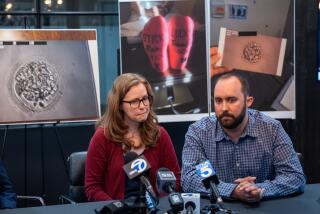Risks of twins, triplets may prompt IVF patients to opt for singletons
A new study bolsters the argument that fertility doctors should transfer just one embryo at a time when they are trying to help women give birth.
Data on 233,850 infants born over a 10-year period show that twins, triplets and other “higher order multiples” are more likely to die prematurely and to require costly medical care compared to babies born as singletons.
In a study published Monday in the journal JAMA Pediatrics, researchers reviewed birth, hospital and death records for infants born in Western Australia between 1993 and 2003, following each child for at least five years.
Compared with the infants born solo, twins were 3.4 times more likely to be stillborn and 6.4 times more likely to die within 28 days of birth. Those risks were far greater for the higher-order multiples: 9.6 times and 36.7 times respectively.
The average hospital costs in the first five years of life rose dramatically with the size of the delivery: $2,730 for singletons, $8,993 for twins and $24,411 for triplets and up. The added expenses of multiple births were concentrated in the first year.
In vitro fertilization and other assisted reproductive technologies were responsible for a sizable proportion of these multiple births, the researchers found. Among the 226,624 singleton births, only 1% involved fertility treatments. But IVF and other ARTs were behind 15.4% of the 6,941 twin births as well as 34.7% of the 285 higher-order multiples.
The researchers concluded that assisted reproductive technology was responsible for nearly 15% of the inpatient costs associated with multiple births.
The findings support those who would like to see fertility doctors transfer just one embryo at a time as a way of preventing multiple births.
Guidelines from the American Society for Reproductive Medicine recommend single-embryo transfer for women younger than 35 as long as the embryo appears highly viable and it is her first or second attempt at IVF.
While doctors and patients are increasingly following those guidelines, many women still opt for multiple embryo transfers in the hopes that at least one will take and the high cost of trying again can be avoided.
That, of course, leads to more multiple births, which have their own costs — as the study illustrates.
In an editorial accompanying the study, two University of Pennsylvania researchers point out that single-embryo transfer is used less frequently in the U.S. than in other developed countries where IVF is covered by national health systems.
They also cite research showing that in states with laws requiring insurance coverage for IVF — there are 15 such states — women are more likely to use the technology but less likely to transfer multiple embryos.
Most American insurance policies cover the aftermath of multiple births. That irony was not lost on the University of Pennsylvania researchers, who suggest adding an insurance surcharge for patients who insist on transferring multiple embryos.
IVF is not the only medical intervention that increases the likelihood of multiple births. Data suggest drugs that stimulate the ovaries to produce more eggs may be even more likely to result in higher-order multiples.
Those treatments give doctors far less control over how many embryos implant in the uterus, though the number can be reduced through selective abortion.
Twitter: @alanzarembo







